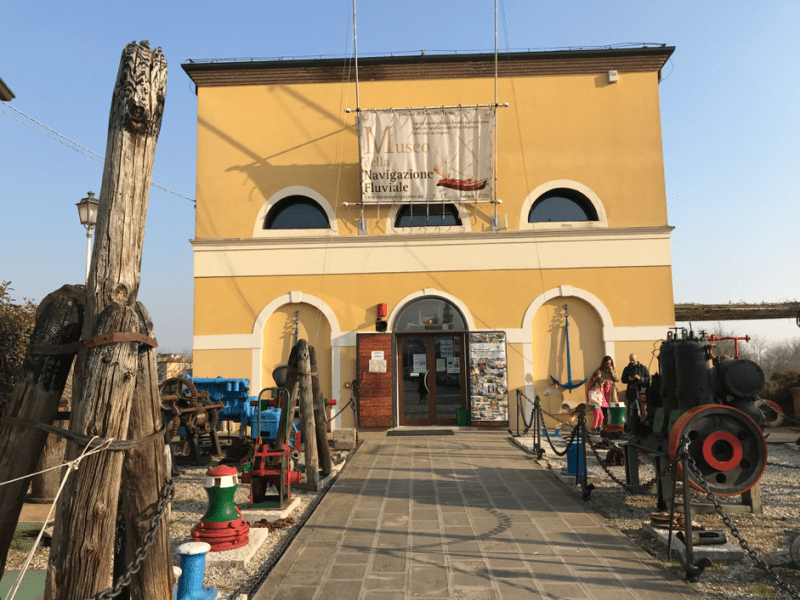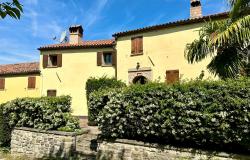When you’re next in Venice, remember to look down and consider the non-slip stones beneath your feet. They have a story to tell.
In the sleepy faded spa town of Battaglia Terme not far from Padua lies the key to the building of the great and unique city of Venice. The Euganean Hills around Battaglia Terme are extinct volcanic cones with hot springs, now a regional park and an area favoured particularly by German tourists for its spa treatments and its wines. But at some point a thousand or more years ago it must have been discovered that the stone quarried there provided the perfect paving stones for the passages and alleyways of Venice, having a salt-resistant rough texture which prevented slipping, an important factor in a city based on water.
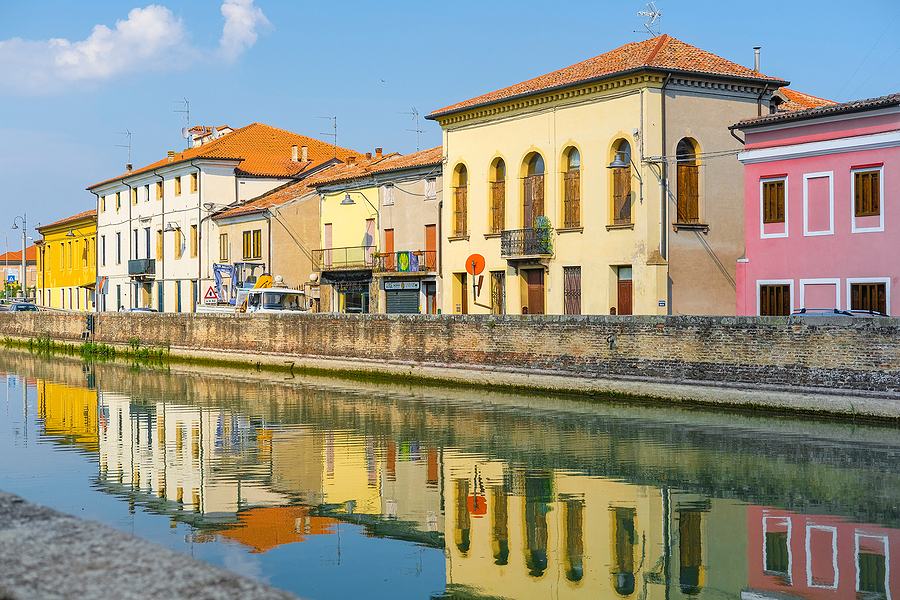
Canals provided the easiest means of transport to ship these stones from Battaglia Terme to Venice and in consequence a network of navigation systems sprang up and remained in use until the mid 20th century. The Battaglia Canal was constructed between 1189 and 1201, preceding by several centuries the canals of the English Industrial Revolution. Italian canals were often built at ground level with walls and banks to contain them, rather than dug out in trenches as in England.
The Museum of Inland Navigation in Battaglia Terme was the life’s work (or at least the past 30 years) of the Battaglia Canal’s last bargeman, the visionary Riccardo Cappellozza, who sadly died recently. He told the story of how he was chatting to his friend the local librarian about his work as a barge man when he was about to retire. They both realised that a whole language was about to disappear. Riccardo supplied the nouns for the tools and equipment, the verbs for the movement of cargo and business of sailing, and the stories about life on the barges, or burci as they are known locally. From that small beginning, he began to collect the abandoned materials of his trade from whole boats to tiny hooks. The collection grew. Space was needed. Not everyone recognised the importance of all these objects, but some enlightened fellow citizens offered him the former abattoir to house the still-growing collection.
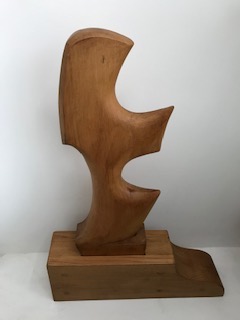
The SS16 Padua-Ferrara road follows the Battaglia Canal, and the entrance to Battaglia is across a modern bridge where various wooden boats have been pulled up onto dry land, waiting to be repaired. This is the furthest outpost of the museum’s collection, next to boat sheds where the canal widens to permit barges to be stored and brought out for the town’s festive occasions, for rides to Catajo Castle and back for one euro. The local rowing club, El Bisato (the eel) also has its headquarters here. The museum itself (signposted) is tucked away behind the main road, but could hardly be missed with its assortment of anchors, mooring buoys etc arranged in front of the entrance.

To enter this treasure trove of a museum is to time-travel to a gentler age of beautiful hand crafted tools and a slower pace of life. There are weathered rudders and worn egg-shaped wooden pulleys attached to neatly twisted ropes, all marinated in time. Amazing tactile sculptures can be found, such as several hand-carved forcole, receptacles for oars made out of the hardest walnut, and beautiful works of art in their own right. The last maestro carver still lives in retirement in a nearby village, and occasionally makes new forcole in their traditional form, but these days from polished cherry wood because the walnut is now too hard for him to carve. I was given one of his last walnut pieces in recognition of my efforts in saving the Canal Museum from closure, and it now stands in pride of place in my home as a constant reminder of the busy commerce of the Venetian Lagoon.
As a child, Riccardo Cappellozza lived with his family on the barge for three summer months each year, trundling through the flat fertile landscape of the triangle formed by Mantua, Ferrara and Venice. There were paddle steamers then, like small versions of Mississippi steamboats, but his wooden barge, one of hundreds, was the common form of transport for the movement of all kinds of cargo, even after the advent of railways. (And he used to point out that today, with our awareness of energy conservation, canal transport is a much greener alternative to movement by road or rail. The canals are still there, and useable for more than the mere summer rides for tourists along the Brenta Canal to see Palladian villas.)
The museum’s top floor gives the illusion that you’re on a large barge. A ship’s steering wheel with brass machinery faces directly onto the canal in front of a floor-length window, and all around are ropes, handling gear, oars and panniers. Signor Cappellozza had a great party trick with the ropes, one which he usually did for visiting school parties. With practised skill he quickly plaited and twisted 20 foot lengths into knots and then invited the children to undo them. When they couldn’t, he used to step in and with a couple of deft flicks the ropes were straightened once more.

The freight boats were either wind-propelled, pulled by horses or pushed along by the boatmen using long oars. In the museum there is even a harness which Riccardo himself wore to pull the barge along when the family had no horse. On one side of the room the various traditional means of propulsion are shown, and on the other a collection of domestic artefacts gives a picture of life on board. The family lived below deck where they kept wooden trunks for linens, a wood-burning stove for cooking and heating, a moscheto to keep insects away from food, and countless small utensils for everyday use. The barge was home, as well as the means for getting to know the outside world as they floated by. The barges passed through the basins and the buta, the flooding created artificially twice a week to compensate for the shallower parts of the navigation system. Black and white photos from the 20s to the 60s help to tell the story of life on the canals and include Riccardo’s family: his father and grandfather were also bargemen.
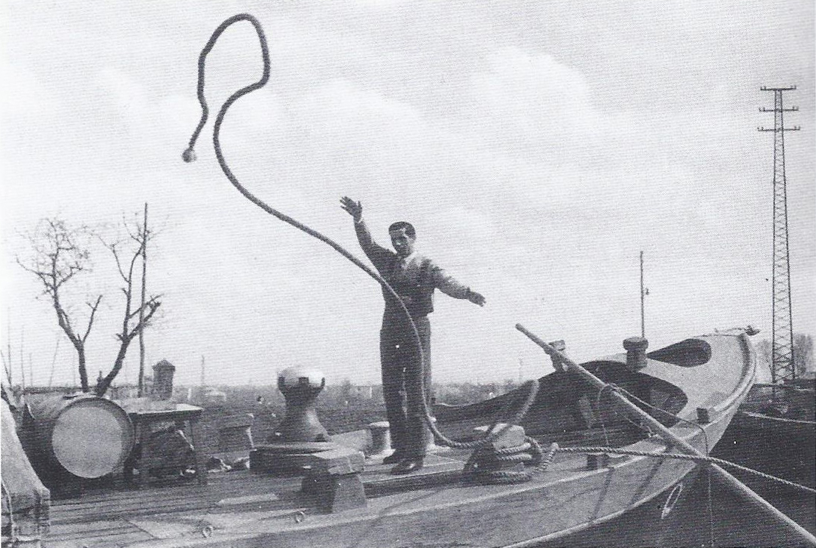
The museum shows us the whole history of the almost forgotten world of river and lagoon transport, from the squeri, where the flat-bottomed barges were constructed (only one squero still remains in Venice itself, and that was brought back into use by an enthusiastic American. (the Battaglia librarian’s son was the first apprentice), to the art of navigating the inland waterways.
The state recognised Riccardo Cappellozza’s great achievement by awarding him the title Cavaliere, (the equivalent of a knighthood) of which he was very proud. In 2008 he was awarded the title of ‘Padovano Eccellente’ and in 2016 was named ‘Barcaro dell’Anno’ (bargeman of the year) in Mantua. Recognition of his achievements has flowed in from other sources, including a piece in last month’s National Geographic Magazine.
He was much more than a museum director; he was himself an important exhibit, a vital connection with the artefacts of a way of life which no longer exists.
This article is in fond memory of Riccardo Cappellozza 1931-2020
Info on the museum
Museo Civico Della Navigazione Fluviale
Via Ortazzo 63
35041 Battaglia Terme
www.museonavigazione.eu
museonavigazionefluviale@gmail.com
Normally it is open at weekends and other days by arrangement.
Tel: +39 049 525170
